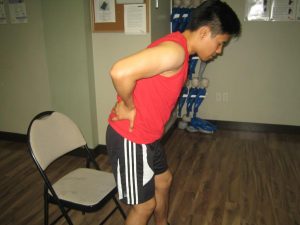A compression fracture of the spine involves damage in one of the vertebrae bones from a compressive force. The injury typically occurs in the lower back due to the excess weight of the upper vertebrae.
Indications
- Pain at the site of the fracture that radiates into the buttocks, hips or thighs.
- Neural symptoms such as tingling, numbness and weakness along with bowel or bladder issues depending on how the fracture compresses onto the spinal cord
Possible causes of a compression fracture of the spine
A compression fracture of the spine can occur during any type of traumatic injury such as falls from a height or landing on the buttocks or feet. In most instances, a compression fracture occurs among the elderly with osteoporosis or other current spinal conditions that involves weakening of the bone.

Due to the weakened bones, the vertebra is compressed under its weight. As the bone starts to thin out, it could no longer support as much weight and fractures easily occur. Among those with several compression fractures, they might start to develop a bent over appearance. The reason for this is that the vertebrae supports the weight of the body at the front and it becomes compressed at the front and remains the same at the back.
Remember that involvement of the nerve is common in both traumatic and degenerative forms of compression fractures due to the closeness of the spinal cord and nerve roots.
Management
Traumatic
If an individual experiences back pain after a fall, it is vital to seek medical care. After the assessment, the doctor might request a CT scan or X-ray to confirm a diagnosis. A traumatic compression fracture of the spine requires surgery so that the vertebrae is pinned back together as well as prevent slippage or spinal cord injury.
Degenerative
The individual should rest from any aggravating activities. The doctor might prescribe pain medications to provide relief. A back support can also be used to take off some of the load from the vertebra.
If an individual has osteoporosis, he/she must perform weight bearing exercises and increase the intake of calcium.
More Information / Disclaimer
The information posted on this page on a compression fracture of the spine is for learning purposes only. Learn to recognize and manage broken bones by taking a standard first aid course with Ottawa First Aid.
